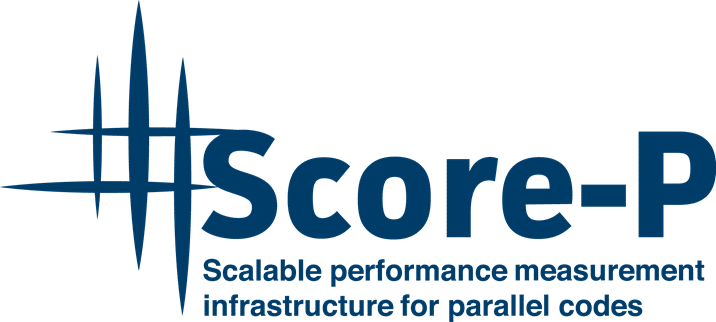
Providing a set of tools to aid application developers as well as system operators to optimise the efficiency with respect to performance and energy, i.e., to maximise system utilisation.
COUNTDOWN
COUNTDOWN is a methodology and a tool for identifying and automatically reducing the frequency of the computing elements in order to save energy during communication and synchronization primitives. COUNTDOWN is able to filter out phases which would detriment the time to solution of the application transparently to the user, without touching the application code nor requiring recompilation of the application. Besides its primary use as an energy-saving framework, COUNTDOWN can be a powerful monitoring tool as it allows us to track and record low-level commands of the parallel application. This then allows a granular monitoring and performance analysis of the application running on specific hardware.
In EUPEX, COUNTDOWN will have two principal uses:
- it will be used as an energy-saving framework which reduces the CPU frequency during the communication and synchronization phases of the parallel application, and
- it will be used as a granular monitoring tool that will give us more insights into the performance of applications running on pilot hardware.
Responsible partner: CINI – University of Bologna
Score-P
The Score-P instrumentation and measurement infrastructure is a highly scalable and easy-to-use tool suite for profiling and event tracing of HPC applications written in C/C++, Fortran or Python. It supports a wide range of HPC platforms and programming models (MPI, SHMEM, OpenMP, Pthreads, CUDA, HIP, OpenCL, Kokkos). Score-P provides core measurement services for a range of specialized analysis tools, such as Vampir, Scalasca, and TAU. For measurement, the instrumented program can be configured to record an event trace in OTF2 format or produce a call-path profile in CUBE4 format. Optionally, PAPI or Linux Perf hardware counters can be recorded. Filtering techniques allow precise control over the amount of data to be collected. Score-P is available under a BSD 3-Clause license.
Score-P will be adapted to the EUPEX Hardware- and Software platform, especially it will need to be adapted to the compiler versions and instrumentation interfaces, OpenMP versions and runtimes, MPI versions, and GPU programming interfaces of the system. It will be integrated in the overall EUPEX software stack.
Responsible partner: Jülich
Scalasca
Scalasca supports the performance optimization of parallel programs by measuring and analysing their runtime behaviour. The tool has been specifically designed for use on large-scale systems, but is also well suited for small-and medium-scale HPC platforms. The analysis identifies potential performance bottlenecks – in particular those concerning communication and synchronization – and offers guidance in exploring their causes. Scalasca is available under a BSD 3-Clause license. The user of Scalasca can choose between two different analysis modes: (i) performance overview on the call-path level via profiling and (ii) the analysis of wait-state formation via event tracing. Wait states often occur in the wake of load imbalance and are serious obstacles to achieving satisfactory performance. The latest versions also include a scalable critical path analysis and root-cause analysis. Performance-analysis results are presented to the user in an interactive explorer called Cube that allows the investigation of the performance behaviour on different levels of granularity along the dimensions metric, call path, and process. For instrumenting and measurement, Scalasca leverages the community-driven instrumentation and measurement infrastructure Score-P.
Scalasca will be adapted to the EUPEX Hardware- and Software platform, especially it will need to be adapted to the compiler versions and instrumentation interfaces, OpenMP versions and runtimes, MPI versions, and GPU programming interfaces of the system. It will be integrated in the overall EUPEX software stack.
Responsible partner: Jülich
-
MERIC
The open-source runtime system MERIC is designed to minimize the energy consumption of the HPC infrastructure executing a parallel application by dynamic tuning a wide range of hardware knobs. The idea of dynamic tuning comes from the Horizon 2020 project READEX under which the development of the MERIC has started. The MERIC supports tuning of CPUs and GPUs of various vendors, as well as several power monitoring solutions. The library and associated tools perform a detailed analysis of complex application behaviour, identification of the optimal hardware settings concerning energy consumption and runtime, and dynamic tuning during the application runtime. The output of an application analysis is possible to visualize using the RADAR visualizer.
The MERIC runtime system will be adapted to the EUPEX hardware platform to provide its parameters tuning and resources consumption monitoring to evaluate and improve energy-efficiency of the parallel applications executed on the EUPEX pilot.
Responsible partner: IT4Innovations
BullSequana ARGOS
BullSequana ARGOS is an intelligent solution for continuous, lightweight, multi-domain profiling of HPC and AI workflows. It provides comprehensive visibility into job and cluster performance over time. By monitoring resource utilization, identifying performance issues, and delivering actionable insights, BullSequana ARGOS helps maximize performance and energy efficiency while preserving system reliability. It also includes data analytics to classify and score applications, and to highlight areas that require deeper profiling or debugging.
For administrators, the solution offers multi-domain profiling of applications, helping to identify resource waste, inefficient jobs, and various optimization opportunities. It also facilitates energy cost allocation by project, team, or user and enables assessment of the operational carbon footprint. Additionally, it enables setting power limits and activating the Dynamic Power Optimizer, which automatically adjusts CPU speed to the application’s needs — without requiring any modifications to applications, thereby reducing energy consumption with minimal impact on performance. Furthermore, I/O accelerators can be activated to further enhance efficiency.
For users, beyond offering comprehensive visibility into their job performance, BullSequana ARGOS delivers job-specific efficiency insights that promote more efficient use of resources and code optimization.
The BullSequana ARGOS tool will be adapted to the EUPEX platform to provide energy-efficiency monitoring and power capping capabilities on ARM-based compute blades. New features will be added to provide more precise monitoring of compute nodes and HPC applications, enabling further optimization of their energy efficiency.
Responsible partner: Eviden






